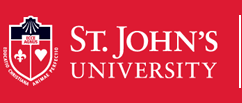ORCID
https://orcid.org/0009-0007-1532-6854
Date of Award
2025
Document Type
Dissertation
Degree Name
Multi-sector Communications (Ph.D.)
Department
Division of Mass Communication
First Advisor
Mark D. Juszczak
Second Advisor
Tiffany L. Mohr
Third Advisor
Lance Strate
Abstract
With the widespread availability of affordable satellite imagery on demand and enhanced image analytics, satellite technology has gradually entered various public and private sectors in Eastern Europe. In particular, it has been implemented to streamline some outdated assessment processes in the agriculture sector, largely decreasing the cost, time, and effort associated with in-person compliance checks for subsidy funds. While in theory this substitution is an enhancement, consistent with the ongoing digitalization of farming in this region of Europe, certain aspects of this transition could be problematic for the individuals observed. This form of satellite supervision has granted governing institutions an almost instant access to information about agricultural parcels for assurance purposes, with the observed farmers having little awareness about when and how these assessments are conducted. This model of remote assurance echoes Foucault’s panopticism but in a modern context that connects it to the tenets of surveillance capitalism. Through a media ecology lens, derived from McLuhan’s understanding of each medium of communication’s effects on society, this research analyzes the use of satellite imagery in the agriculture subsidy sector in Bulgaria. To reveal the areas of tension where the application of the modern technology is problematic, it explores digitalized court decision documents from legal disputes about the use of satellite imagery for subsidies distributed under the European Union Common Agricultural Policy (CAP) process in Bulgaria. This work identifies and addresses a gap in understanding the larger implications of adding a modern technology to traditional processes without fully considering how that might affect the power dynamics within. It concludes with a proposal of a model which lays out the ways information from various sources is used to make decisions within CAP and a number of recommendations for making the program’s supervision component more efficient and transparent. By looking at a series of research questions posed to closely examine the dispute resolution mechanism, this study seeks to understand how satellite imagery is implemented by the macrostructure of the European Union - as a tool of innovation, control, or something else entirely.
Recommended Citation
Stoeva, Desislava Stoycheva, "PANOPTICON FARMING: THE USE OF SATELLITE IMAGERY FOR SUPERVISION IN BULGARIAN AGRICULTURAL SUBSIDY MANAGEMENT" (2025). Theses and Dissertations. 913.
https://scholar.stjohns.edu/theses_dissertations/913
